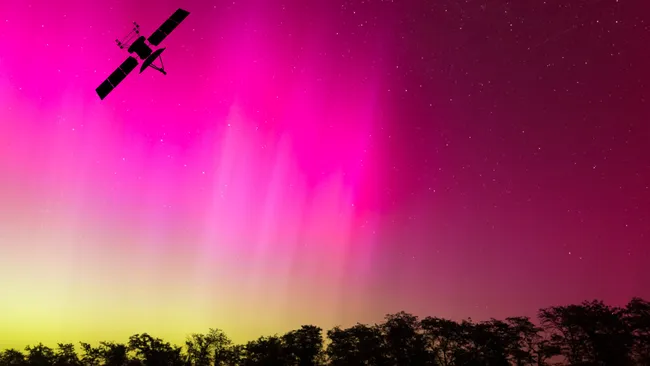-
Launch of Chang’e 6 Mission
3rd May 2024
Chang'e 6 was the sixth robotic mission to explore the Moon, launched by the China National Space Administration (CNSA). It was also China's second mission to bring back lunar samples. The mission is named after Chang'e, the Chinese moon goddess. Unlike previous missions, Chang'e 6 collected samples from the far side of the Moon, a region that had never been explored this way before.

The Chang'e 6 lander (with the ascender on top) on the far side of the Moon. The photo was taken from Jinchan, a camera-equipped mini-rover that was released from the lander. Credit: wikipedia.org
The mission began on May 3, 2024, when the spacecraft was launched from the Wenchang Space Launch Site on Hainan Island. On June 1, 2024, its lander and rover successfully landed on the far side of the moon. The lander used a robotic scoop and drill to collect 1,935.3 grams of lunar soil and rock. These samples were then placed in an ascender module, which launched back into lunar orbit on June 3, 2024. Once in orbit, the ascender docked with an orbiter module on June 6, 2024. The samples were transferred to a re-entry capsule, which returned to Earth. The lander and rover also carried out scientific studies while on the moon. The mission lasted 53 days in total, ending on June 25, 2024, when the capsule carrying the lunar samples landed safely in Inner Mongolia.
References
Wikipedia. "Chang'e 6." [ wikipedia.org]
-
'Largest mass migration' caused by a solar superstorm
7th to 10th May, 2024
A solar superstorm in May lit up the night sky with stunning auroras but caused problems for satellites in space. The storm made Earth's upper atmosphere thicker, which pulled satellites and debris lower by about 590 feet (180 meters) per day. To stay in orbit, thousands of satellites had to fire their thrusters at the same time to move back up. This sudden movement made it harder for systems to avoid collisions because they couldn’t track the changing paths quickly enough, according to a paper on arXiv.

A rendering showing a silhouette of a satellite against a colourful aurora. Credit: cdn.mos.cms.futurecdn.net
References
SPACE.com. "May solar superstorm caused largest 'mass migration' of satellites in history." [ space.com]
-
Discovery of an Earth-sized planet
24th May, 2024

Gliese 12b orbits a cool red dwarf star located just 40 light-years away.. Credit: media.cnn.com
Gliese 12b had been characterised as a possibly habitable exoplanet, which orbits a small and relatively cool red dwarf star that lies 40 light years from Earth in the direction of the constellation Pisces. The star is a miniature one, only 27% the size of the sun and 60% as hot. Gliese 12b stays within the habitable zone because of its orbital period; one rotation around its host star takes 12.8 days, with a diameter smaller than Earth's but substantially larger than Venus's, so its surface temperature would reach as high as 107°F (42°C) if it has no atmosphere. Masayuki Kuzuhara of the Astrobiology Centre and Akihiko Fukui of the University of Tokyo termed it the "nearest, transiting, temperate, Earth-size world" so far discovered. Its atmosphere will be studied in the future for water and other life-supporting components.
References
CNN World. "Scientists have discovered a theoretically habitable, Earth-size planet." [ cnn.com]